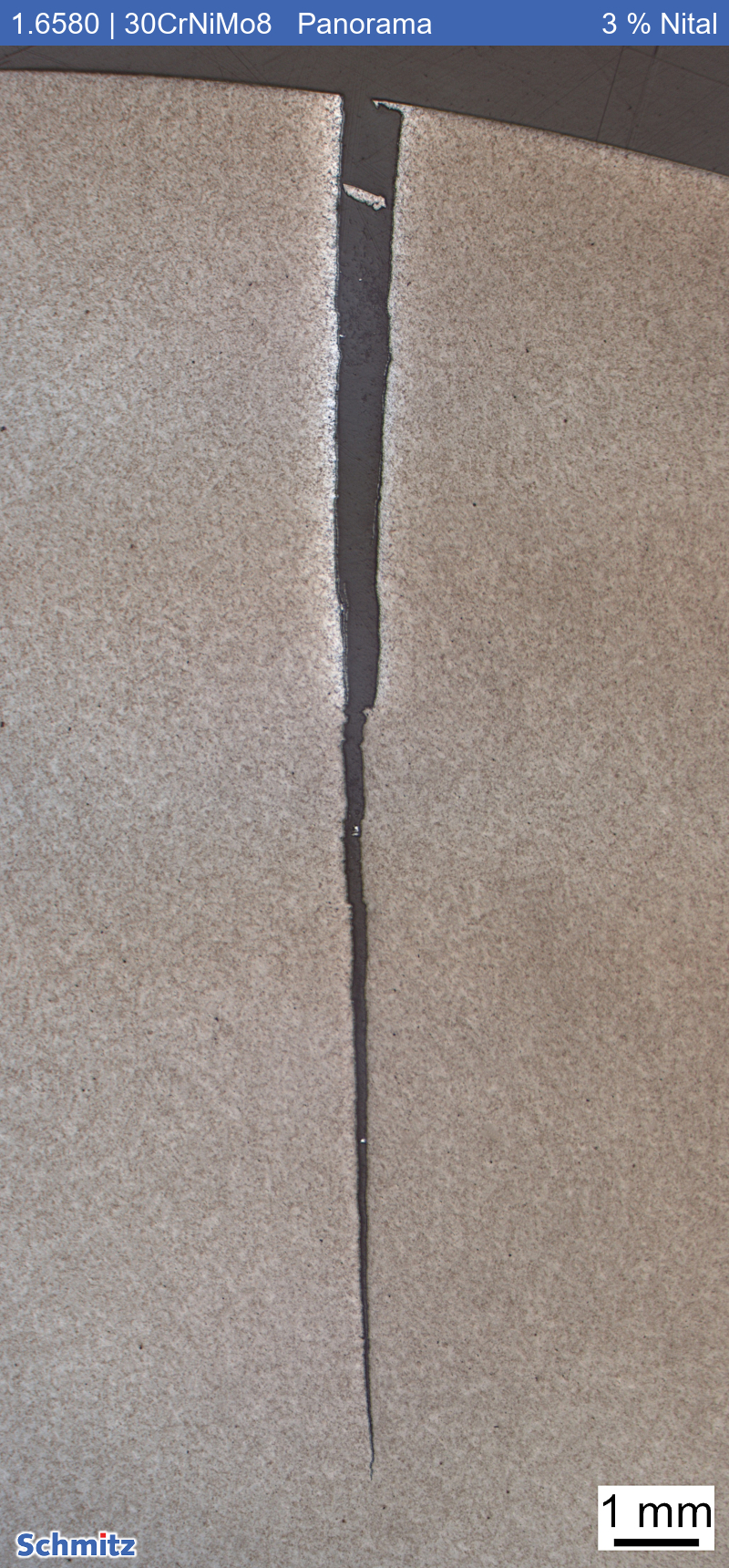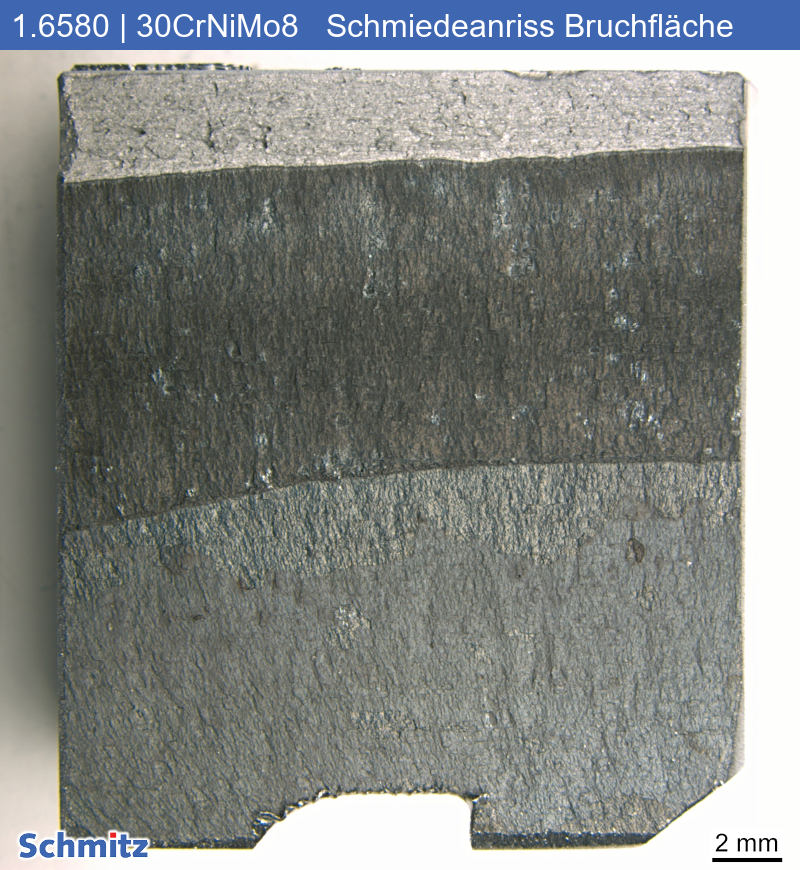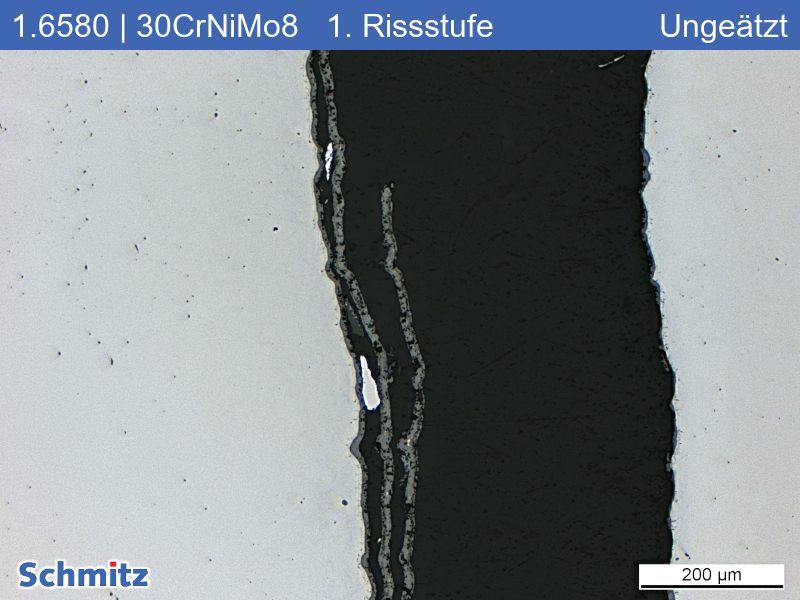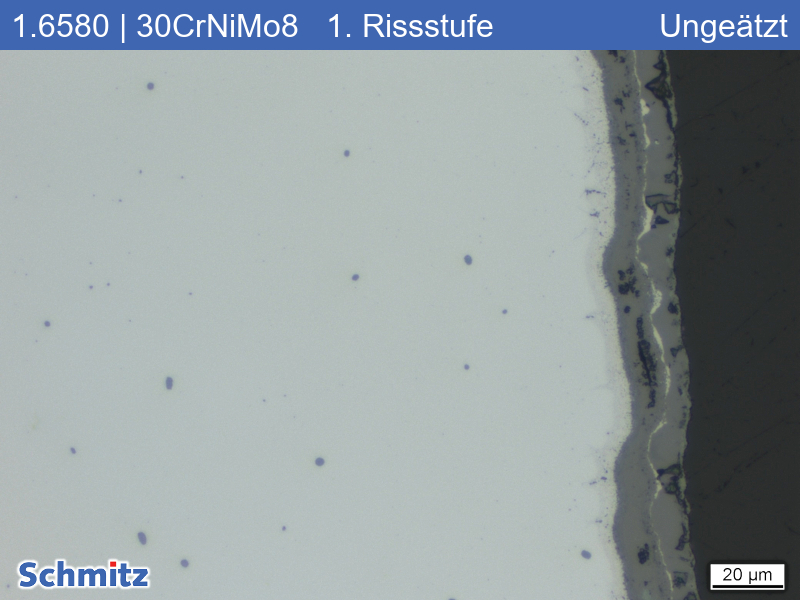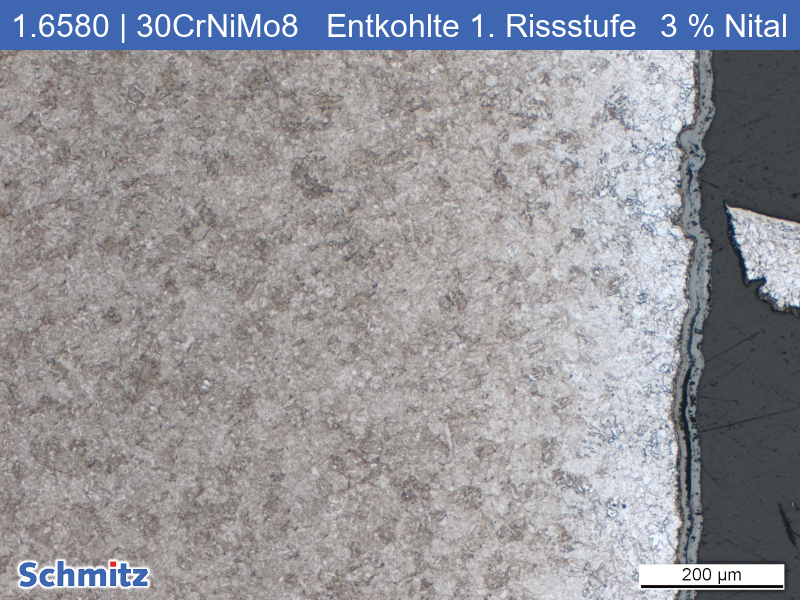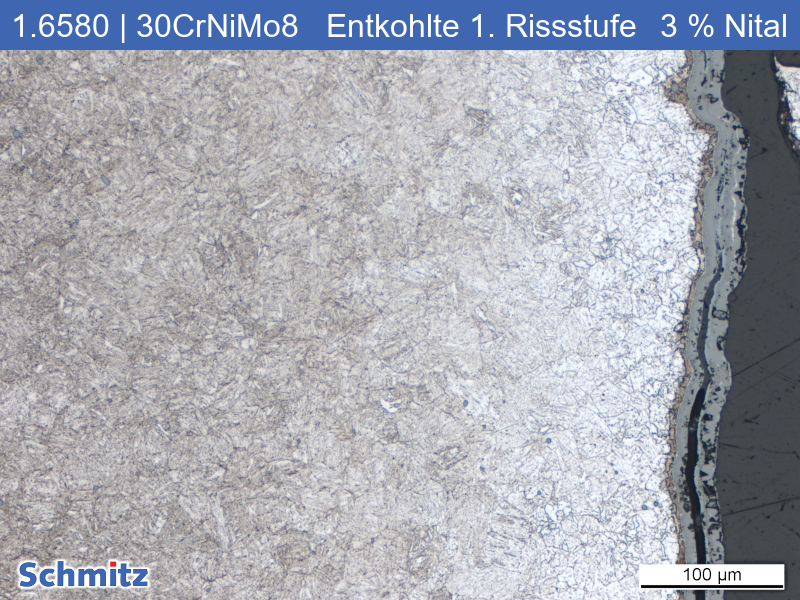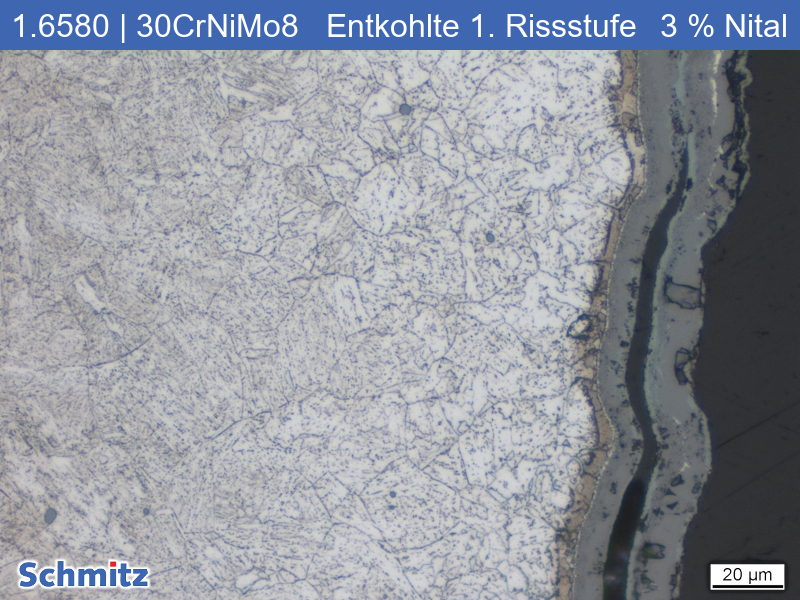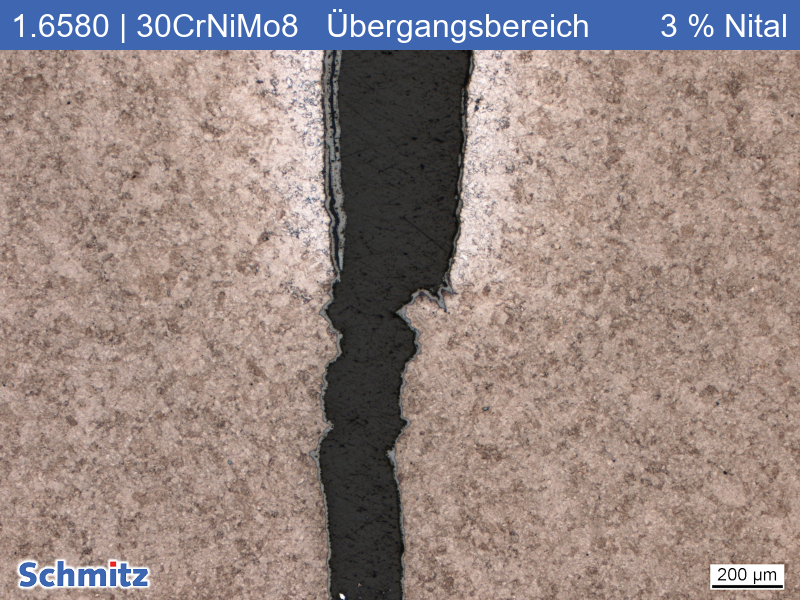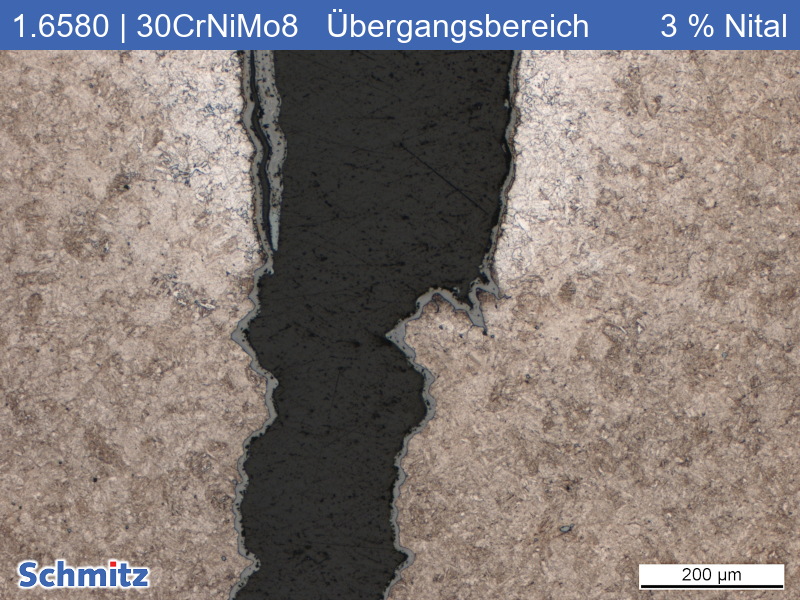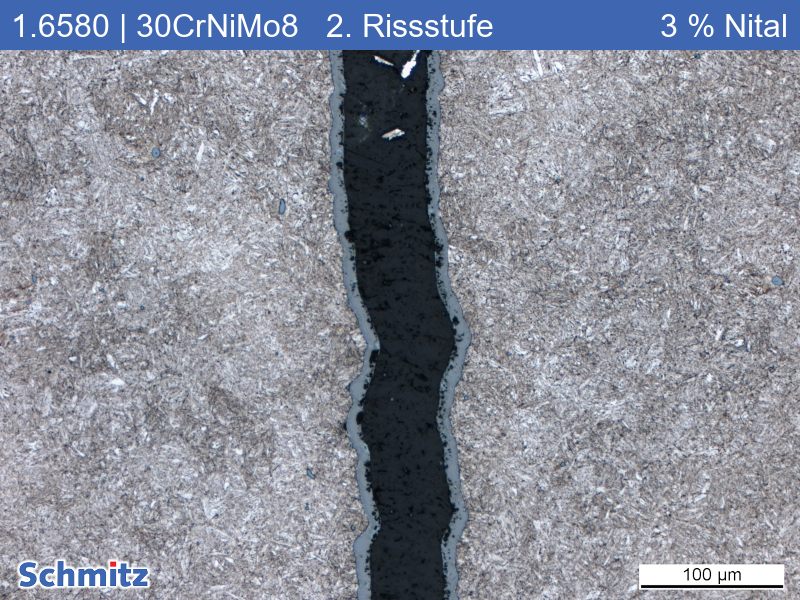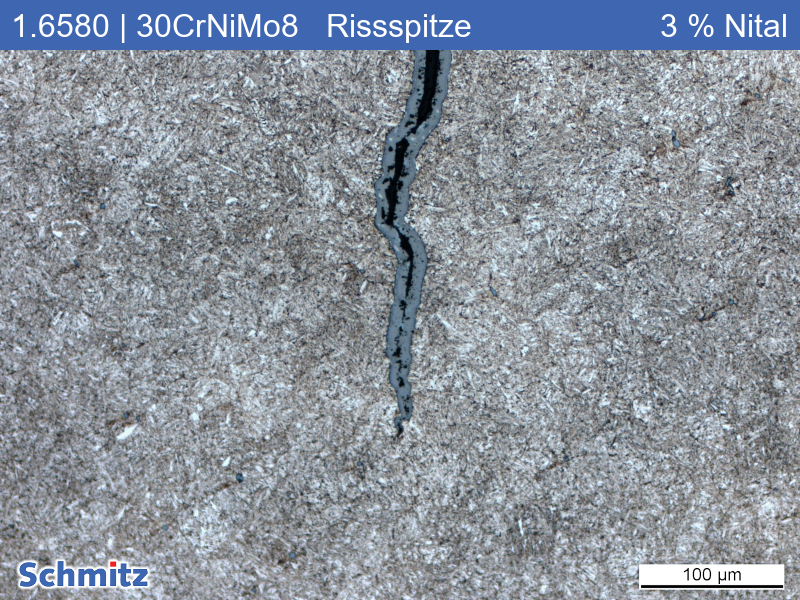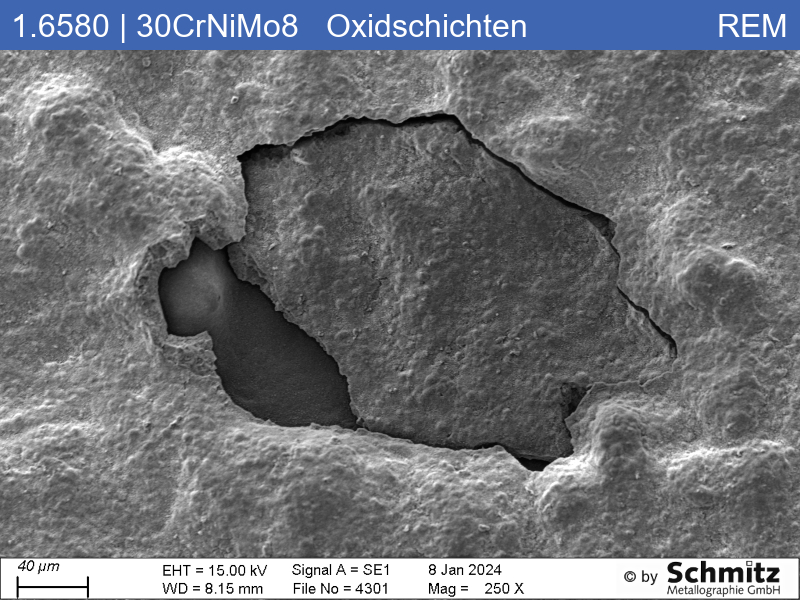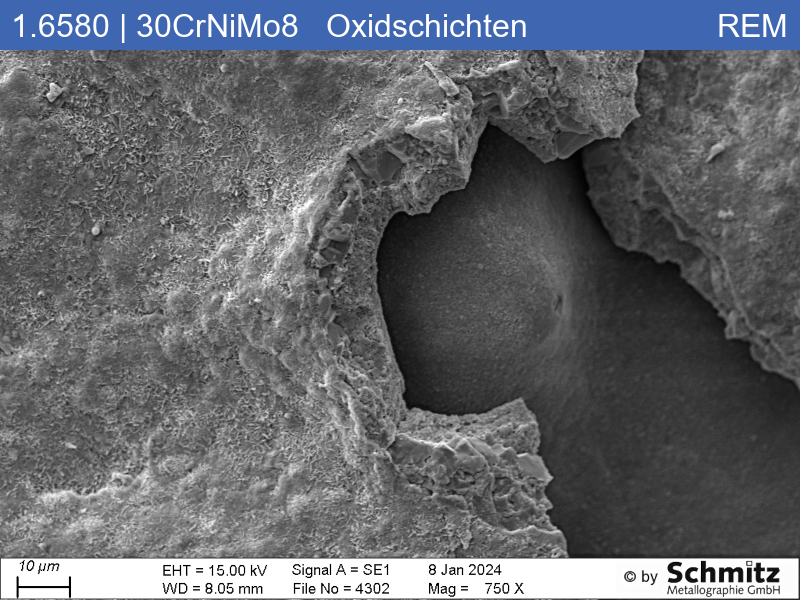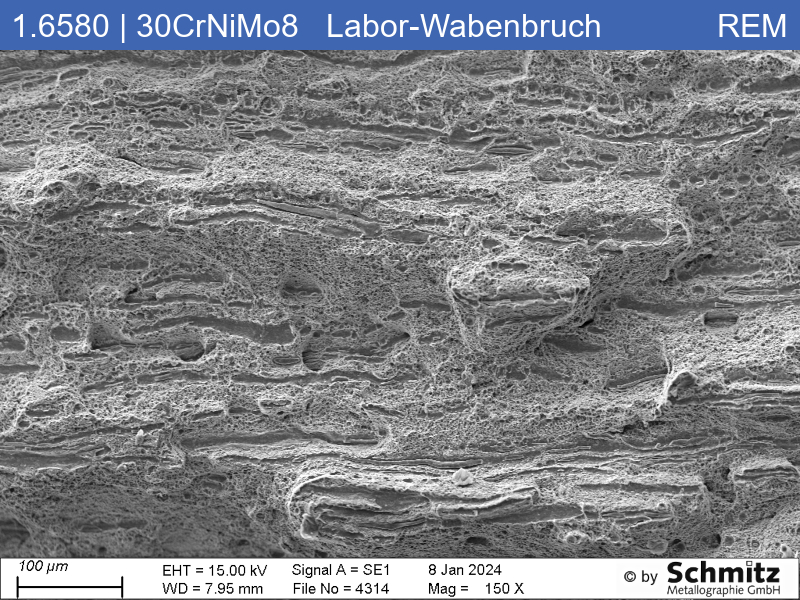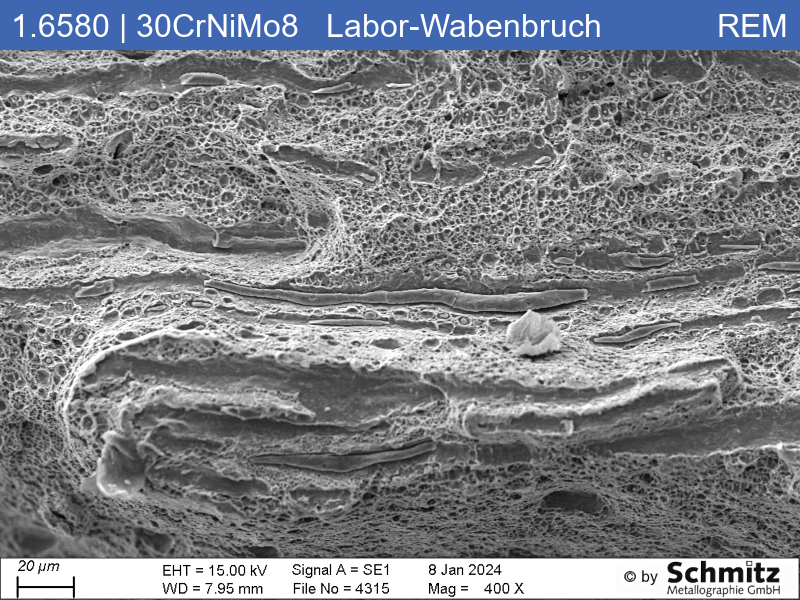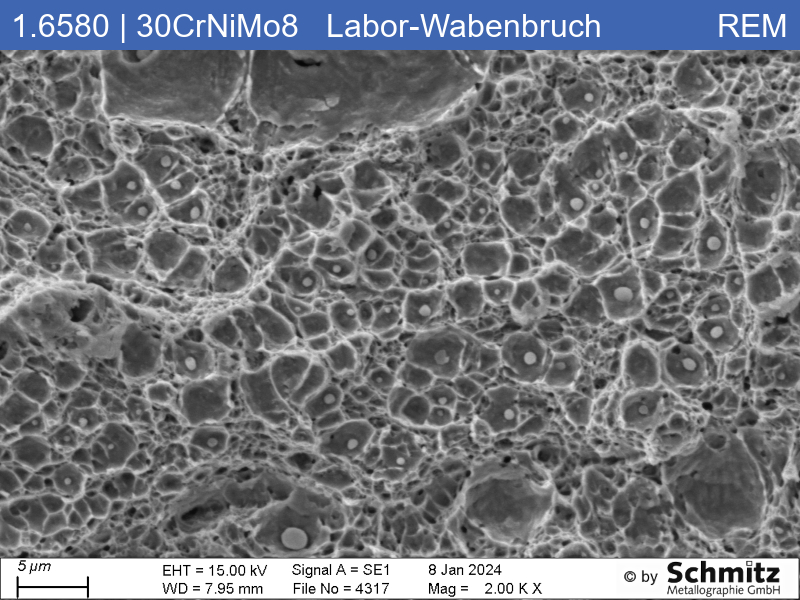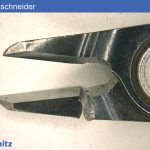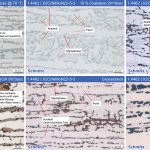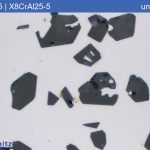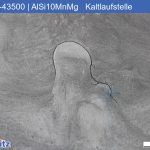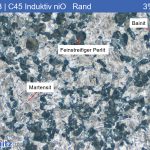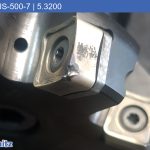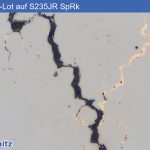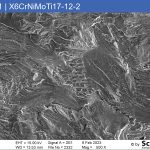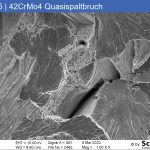1.6580 | 30CrNiMo8 +N + QT Forging crack
| Numeric designation | 1.6580 | ASTM E4340 |
|---|---|
| Chemical designation | 30CrNiMo8 |
| State | Forging crack |
| Etching | 3% Nital |
A long longitudinal crack was noticed on this shaft during machining. Even macroscopically, two different crack stages can be clearly identified.
A cross-section through the crack shows that it is completely covered with a grey oxide layer, in some cases in several layers. The first, upper crack stage is decarburised at the edge (light edge zone) and somewhat more heavily oxidised. It was probably formed during forging, descaled and decarburised during the final heat treatment. The second crack stage probably formed during the quenching process after hardening.
As the surface of the sample had already been worked away, the actual cause of the crack (e.g. material fold or slag line) could no longer be determined.
The microstructure is a fine-grained tempered microstructure, the hardness is 370 ± 4 HB2.5/187.5 both at the edge and in the core.
The SEM images of the fracture surface also show the multi-layered scale layers, some of which are chipped or bulging.
A comparative fracture produced in the laboratory appears in the form of a healthy honeycomb fracture structure with many manganese sulphides (sometimes several 100 µm long lines, sometimes very small inclusions in the honeycombs).

